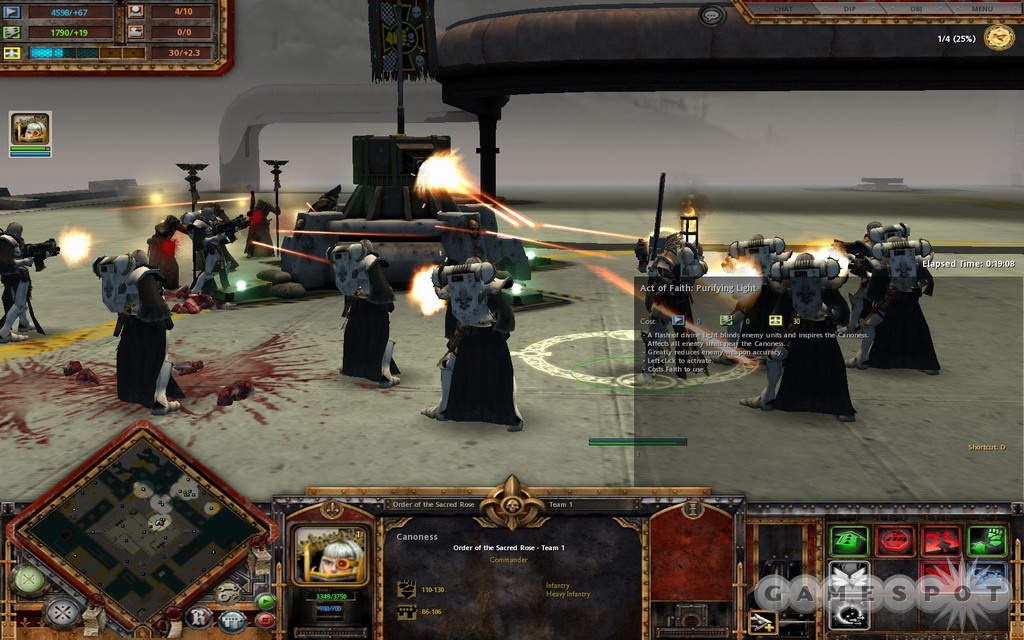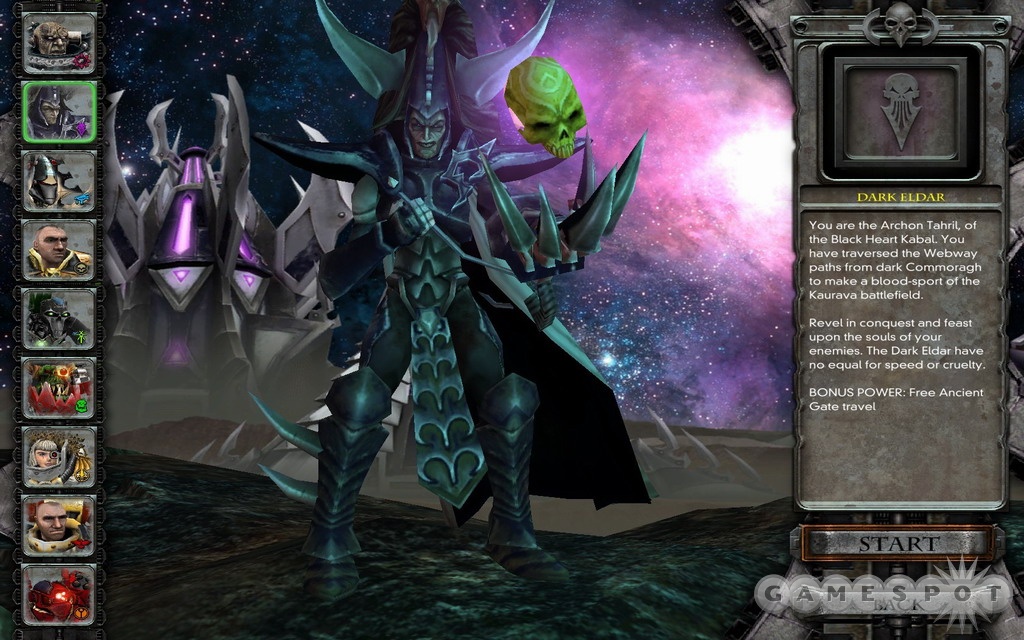Warhammer 40,000: Dawn of War: Soulstorm, the third and presumably final addition to the four-year-old real-time strategy franchise based on Games Workshop's billion-dollar tabletop-game system steals its best moments from 2006's fantastic Dark Crusade expansion. Consequently, this stand-alone add-on has a been-there, done-that vibe. Only the presence of tried-and-true action-packed gameplay, along with the introduction of two new factions and an expanded nonlinear campaign, elevates the proceedings above a feel-good exercise in recycling, and these elements are so similar to those introduced in Dark Crusade that you're guaranteed to have a couple of flashes of deja vu.

When you get right down to it, Soulstorm is pretty much a carbon copy of Dark Crusade. The big additions to the Warhammer 40K family are, once again, two more factions and a nonlinear campaign based on a Risk-style turn-based tactical map. Here, the two new sides are the fanatically religious Sisters of Battle, a group of pissed-off space nuns who take Catholic guilt to a whole new level, and the sadistic Dark Eldar, who chow down on souls for fun. The Sisters are most notable for such downright spooky units as the Penitent Engine, which consists of a heretic strapped to the front of a crucifix bot loaded with flamethrowers, and a faith resource that juices what amounts to battlefield spells. The Dark Eldar are almost as memorable, due to a nifty slave-and-demon thing going on with regard to units, and a new soul-essence resource that powers enemy-blasting combat abilities. But even though these features give the factions plenty of personality--particularly the Sisters, whose Canoness leaders screech loony battle cries like "Witchcraft, heresy, and mutation!"--neither brings much new to the table when it comes to gameplay. If you've already developed solid playing styles for the Imperial Guard or the Orks, you don't have to make too many changes to be effective while fighting as the Sisters or the Dark Eldar.
Few surprises are on offer in the campaign structure, either, which is a straight rip of the one in Dark Crusade. The only change here is that your war rages over territories spread between four planets and three moons in the Kaurava system, which gives the campaign more of an intergalactic atmosphere. Regardless, there aren't any serious differences between the single-planet campaign in Dark Crusade and the multiplanet one here. The number of territories to be conquered is roughly the same at 31, and you can hop between worlds like you were walking across the street. So the only real difference is the turn-based map screen in which you plot out moves, which is an attractive rendition of a solar system instead of simpler planetary terrain.
Furthermore, a lot of story seems to have been sacrificed to provide a nonlinear campaign. The flimsy plot deals with a warp storm that draws the interest of the game's nine factions to the Kaurava system, setting up a battle royal that plays out more like individual skirmishes than an integrated campaign. As such, mission goals are very repetitive. You build a base, set up some plasma generators, crank out troops, and then head off to conquer and secure strategic points on the map to boost the requisition resource--over and over. Chances are awfully good that you'll lose interest in figuring out the mystery behind the warp storm long before you conquer a couple of planets and start getting some answers. In many ways, a fully scripted campaign would be more intriguing in a game like this. It would probably be a better way to tackle the soap-opera intrigue and craziness of the Warhammer 40K universe.

Other aspects of the game are holdovers. Enemy AI is spectacularly dumb on easy difficulty and a pretty stiff challenge on normal, which makes for a big leap if you start on the bottom rung of the ladder. Aerial units have been added to all factions, including both of the two new ones as well as the seven existing ones, but they don't make any serious impact on gameplay. Combat aircraft just seem to give you a boost in speed, letting you pull off quickie attacks to seize critical strategic points and relics. You can live without aerial units in solo play, although smart human players online tend to use them a lot for the aforementioned lightning strikes on key map points. Dozens of skirmish maps are available for two to eight factions in skirmish mode, and most of them have been ported in from previous editions in the series. Visuals and sound appear to date back to the inception of the franchise in 2004, which makes for a dated experience. However, the game was quite a looker way back when, so it's stood the test of time fairly well. And you still can't quibble with the detailed, colorful take on Games Workshop's miniatures, or the apocalyptic look of the levels, which are just as grim and nasty as you'd expect from the Warhammer universe.
Soulstorm feels like a fitting end to the Dawn of War line, even if the the secondhand features and gameplay keep it from hitting a high note. The addition of the Sisters of Battle and the Dark Eldar rounds out the Warhammer 40K lineup of factions (except for the oddly MIA gene-stealing Tyranids), and the planet-hopping campaign gives the franchise an epic, intergalactic feel for the first time. Nevertheless, the familiar gameplay tastes stale, and after four years, it’s run its course.



